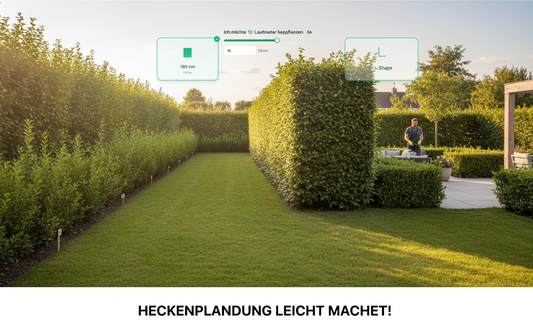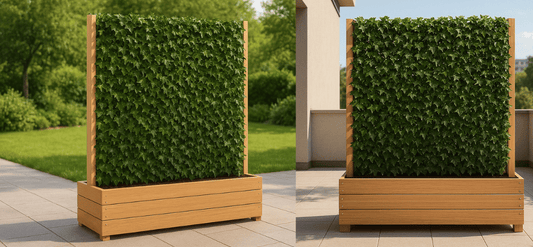Ivy hedges: care instructions
Here you'll find information and care tips for your new ivy hedge. To ensure your ivy hedge grows healthy and densely, we'll provide you with some basic information and care tips. With the right measures, your hedge will stay healthy, strong, and beautiful all year round. Read more here.
Hedge trimming
Depending on how narrow you want the hedge to be, trim it once or twice a year. You can trim the hedge along the entire area using electric pruning shears.
We recommend pruning in May/June and early September. This allows new growth to mature before winter and prevent it from freezing back.
To make the ivy hedge denser, you can avoid cutting it back during the first growing season and instead weave the shoots into the trellis.
Root development
Root formation normally occurs only underground. Root growth must not be disrupted by obstructive layers or concrete elements.
Foliage coloring
The reddish and coppery discoloration of the leaves in winter is normal and nothing to worry about. The ivy variety "Woerner" exhibits this typical leaf discoloration at the onset of the cold season. When the first low temperatures arrive, the leaf cells produce a cold protection agent that colors and protects the leaves. In March, when the weather warms up again, the substances responsible for the discoloration are broken down, and the leaves return to a full green.
Care tips for winter
Ivy hedges can be planted until November. The ground should not be frozen.
If longer periods of frost are forecast, water the hedge beforehand, as the frozen ground cannot absorb water.
If there is snow or the ground is slightly frozen, the hedge can be watered as normal.
irrigation
The hedge should be watered regularly throughout the year. Especially during the initial planting period and during hot or dry periods, the finished hedge needs regular watering (approximately 30 liters per hedge element per watering session).
Regular watering is necessary. However, you should allow the soil to dry out between waterings. Avoid stagnant water on the hedge.
Your hedge needs water even in winter. Even when the sun is shining, the ivy leaves evaporate water. Water when the ground is frost-free and dry in winter.
If the hedge element is placed in a planter, you should avoid overwatering: drill holes in the bottom of the planter or place a water overflow with a water level indicator.
An automatic irrigation system is also recommended.
fertilization
A regular supply of ivy plants with sufficient nutrients is important for good growth and to prevent deficiencies in the leaves. We recommend fertilizing the hedge with a dry, slow-release fertilizer at least once a year in spring.
If planted by mid-August, the first fertilization should take place one month after planting. If planted in October, fertilization the following spring is sufficient.
We hope you enjoy and benefit from your new ivy hedge! Find more information on planning and installation here.
Your Efeuria Team



